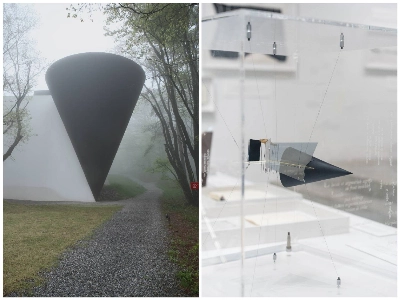Last month, a Russian missile blew apart an apartment building in the center of Lviv. I sent a message to a friend who lives there: Was everyone okay? “Yes, we were lucky,” he replied. “Our friends who live just next to us, a young woman and her three daughters, are dead.”
Then I saw the footage. The neighbor, Yaroslav Bazylevych, his face cut and bloodied, watched as the bodies of that young woman — his wife — and their three daughters were pulled from the rubble. A photo from the funeral, showing Bazylevych staring into the open coffins, should enter the pantheon of iconic images of atrocity: the little Jewish boy with his arms raised in the Warsaw Ghetto, the naked Vietnamese girl fleeing her village after a napalm attack, the body of the 2-year-old Syrian boy washed ashore on a Turkish beach.
The hypersonic Kinzhal missile that killed the Bazylevych family, like the one that hit the Okhmatdyt children’s hospital in Kyiv two months earlier, was fired from deep inside Russia. The launch sites are not a mystery; the Ukrainians know where they are. The missile that killed Yaroslav’s wife, Evgeniya and their daughters was launched from a MiG-31K aircraft in Russia’s Tula region.



















With your current subscription plan you can comment on stories. However, before writing your first comment, please create a display name in the Profile section of your subscriber account page.